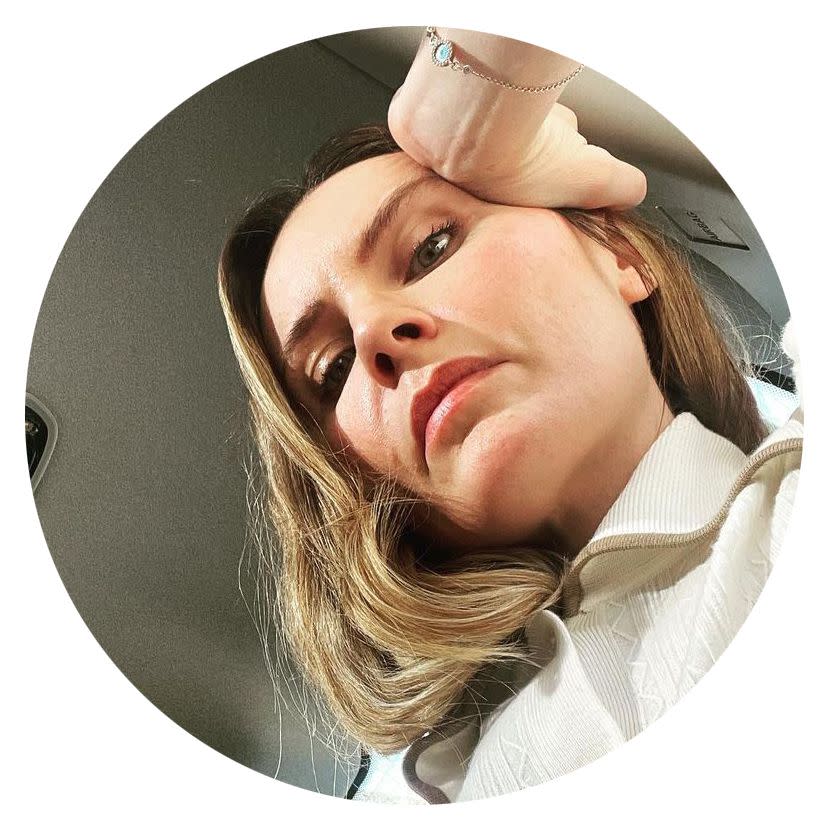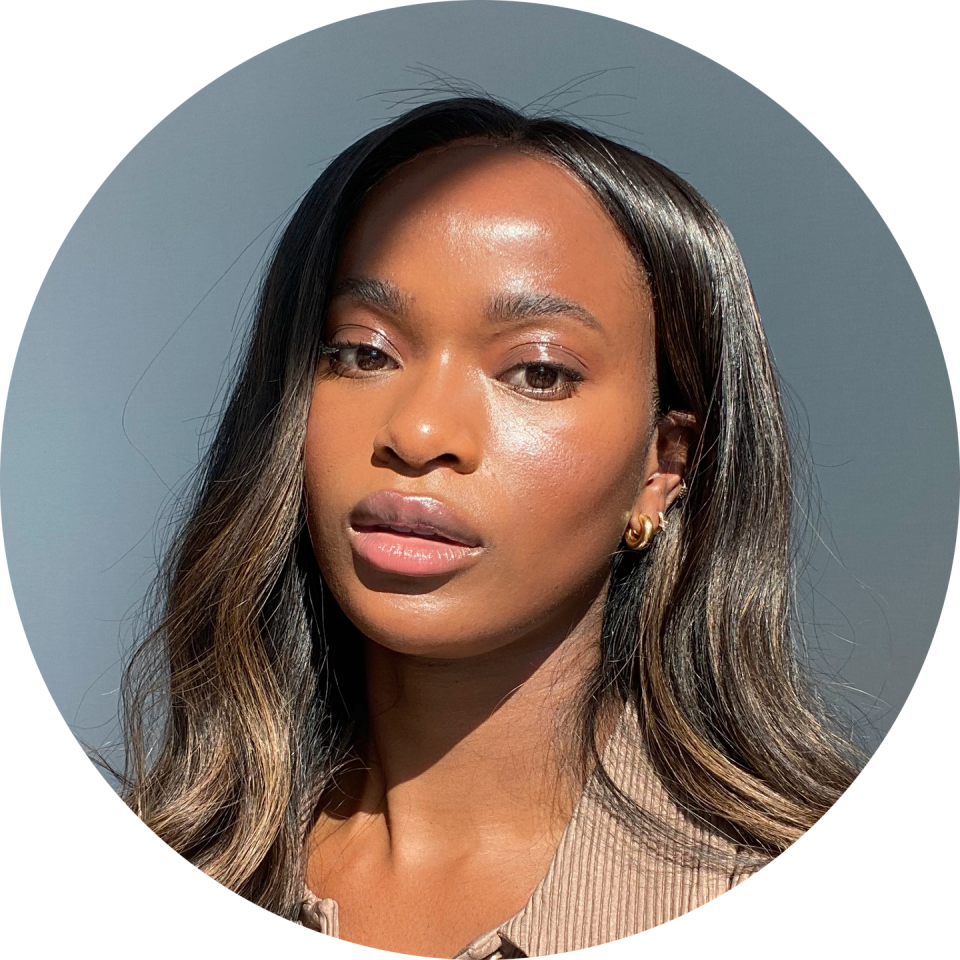ELLE Editors Share Their Favourite Hard-Hitting Skincare Heroes

New-gen ingredients are working harder than ever and, from fine lines and hyperpigmentation to breakouts and inflammation, they really make a difference. The ELLE team pick their favourites...

Katy Young: Niacinamide
It's hard to believe the beauty world would have, or even need, a black market. But it’s here that unknown skincare actives hide until they are regulated or disappear, never having quite made it to the mainstream. Or, in the case of niacinamide, until they are celebrated with the fanfare they deserve.
Niacinamide should never have been a secret, to be discovered only through shady websites or via a dermatologist’s prescription – the latter being my route, before you ask. In my book, there is no better single ingredient to give a less-than-perfect complexion a chance to improve.
My addiction to the good stuff began in the pursuit of regulating oil production and minimising pores – both lifelong symptoms of my combination skin, and problems niacinamide tackles well. But back then, dermatologists knew that this wonder active also builds up the skin’s keratin levels to increase firmness, strengthens the lipid barrier for healthier moisture levels, helps with redness and inflammation and fades pigmentation and fine lines. No wonder the vitamin-B derivative is often billed as a safe alternative for the retinol-averse.
It was only a matter of time before the multitasking ingredient hit the big time, which thankfully happened around five years ago. Cut to 2024, and it is hard to think of a good skincare brand or, for that matter, any skincare junkie, who doesn’t extol the virtues of niacinamide. I now use it every night.

Dr Ewoma Ukeleghe: Retinols
The terms 'retinoids' and 'retinols' are often used interchangeably, but there are differences. Retinoids, commonly available as adapalene and tretinoin, are only available through prescription in the UK. Retinol is a form of retinoid and is widely available over the counter; both are vitamin-A derivatives.
In the last few years, the active has gained juggernaut status on social media as the ultimate anti-ageing ingredient when, in fact, it has been a staple among dermatologists and skincare professionals for decades. Its key benefits include stimulating collagen production, increasing cell turnover, improving texture and tone, reducing spots and boosting the skin’s luminosity.
When incorporating retinol into your routine, it’s crucial to start with a lower concentration and increase it gradually. I recommend using retinol twice a week; if you are prone to sensitivity, try sandwiching it by applying a moisturiser first, followed by the serum and then your moisturiser again. This approach will help you avoid an unwanted reaction. Also, give your exfoliants and acids a rest for the first month to see how your skin gets on.
My favourite retinol product is Medik8 Crystal Retinal. It’s the perfect option that sits between retinol and tretinoin (depending on which formula you opt for) and comes in different strengths, so there’s something for everyone. Ole Henriksen is great for more sensitive skin, while Dr Sam’s Flawless Nightly 2% Retinoid Serum has added ingredients that also target hyperpigmentation.
It goes without saying that some retinol formulas can cause irritation and sensitivity as skin cell renewal is sped up, so it’s essential to wear a minimum of SPF30 every day.

Katie Withington: Exfoliating Acids
Even though I'm a beauty writer by trade, I'm yet to venture into the world of tweakments. Instead, I look to skincare’s punchiest active for transforming my complexion: acids. Years of testing have taught me a lot about my hormonal, acne-prone skin, from which actives it can handle to when to dial back on ingredients during my cycle. The result? A slow-burn love of chemical exfoliants.
Scrubs that scratched away rough skin were a rite of passage that taught me far more about how not to slough off dead skin cells. Think redness, irritation and one severely broken skin barrier. The idea that 'the burn means it's working' is a total myth, by the way.
While the ultra-fine powder formulas of today are far gentler, I find that a chemical-exfoliant toner (using acids to peel and reveal brighter skin beneath) slots into my routine more effortlessly, without compromising on the radiance I love to see.
A short lesson in acids: AHAs (glycolic and lactic acids) are great for resurfacing; BHAs
such as salicylic acids are best for acne-prone skin; and PHAs are ideal for sensitive or dry skin types and targeting fine lines. Note: SPF is an absolute must, no matter which acid you go for.
For my temperamental skin, I enjoy a 2-4% BHA formula from CosRx or Naturium. Oil-soluble by nature, salicylic acid offers the best results for pesky hormonal breakouts. I’m incredibly sparing with my usage – reaching for potent actives no more than once a week – and prefer an intuitive approach to my complexion. Balance matters, too. If I’m exfoliating, I’ll reach for barrier-building, soothing formulas to cleanse and moisturise. I have learnt from my past skincare mistakes. No more unnecessary tingles, thank you.

Medina Azaldin: Pigmentation Control
After a 12-month course of Isotretinoin (with consultant dermatologist Dr Anjali Mahto, whom I highly recommend for anyone with problem skin), my complexion is the clearest it has ever been. Now the throbbing cystic acne is gone, and the only evidence of its existence is the post-inflammatory hyperpigmentation left behind. The constellations of soft red flecks around my cheeks, coupled with tiny dark spots – a completely normal sign of ageing in people of Southeast Asian descent – means the overall tone of my skin is not as even as I’d like it to be.
In the hands of a good practitioner, lasers – like those mentioned on page 124 – can help. But as I’m still easing off the isotretinoin with retinoids to keep recurring blemishes at bay, I’m relying on clever topical formulas instead. Klira, the bespoke-skincare service by consultant dermatologist Dr Emma Craythorne, offers prescription-grade ingredients tailored to your skin type, condition and genetic tendencies. My formula combines 0.025% tretinoin with 10% azelaic acid (on a lightweight aloe base to soothe irritation) to help with skin regeneration and heal the scarring, all while strengthening the skin barrier and encouraging collagen production. The anti-inflammatory qualities of azelaic acid, alongside its ability to treat skin discolouration without compromising delicate complex-ions, makes it a firm favourite among skincare experts. Alpha arbutin is also useful in the prevention and fading of dark spots as it inhibits the production of tyrosinase, the enzyme involved in melanin development.
Of course, a commitment to using at least SPF30 – no matter the weather – is key to maintaining your hard work and ensuring the pigmentation does not worsen through exposure to UV rays.
ELLE Collective is a new community of fashion, beauty and culture lovers. For access to exclusive content, events, inspiring advice from our Editors and industry experts, as well the opportunity to meet designers, thought-leaders and stylists, become a member today HERE.
You Might Also Like


